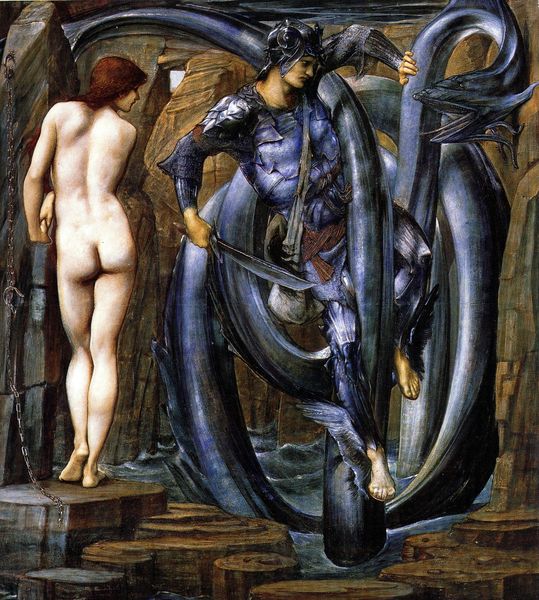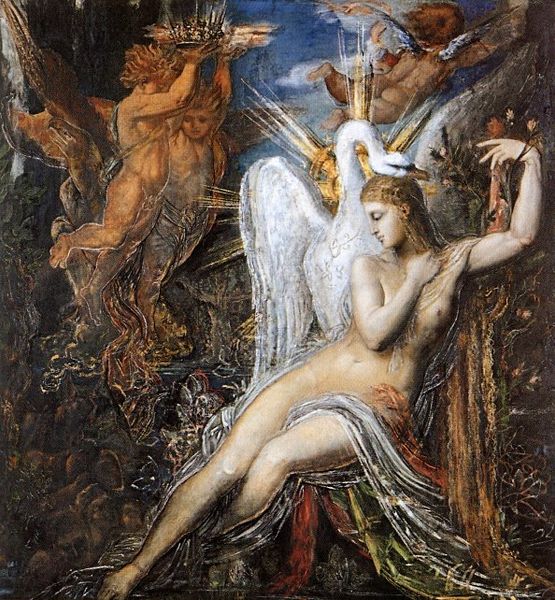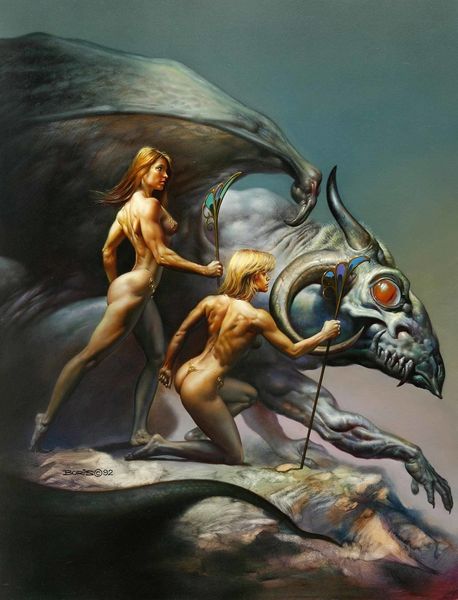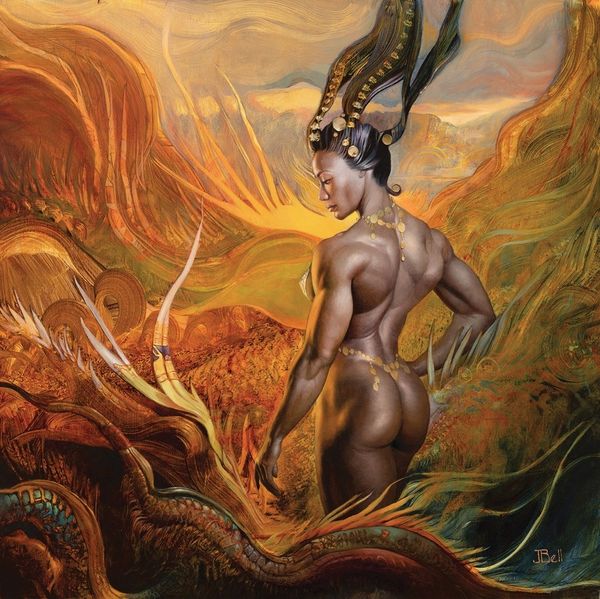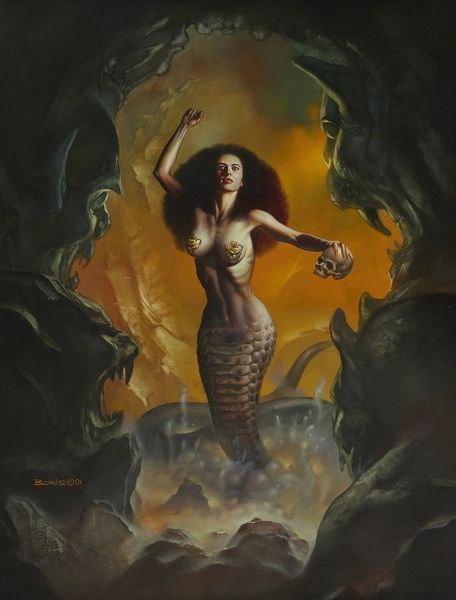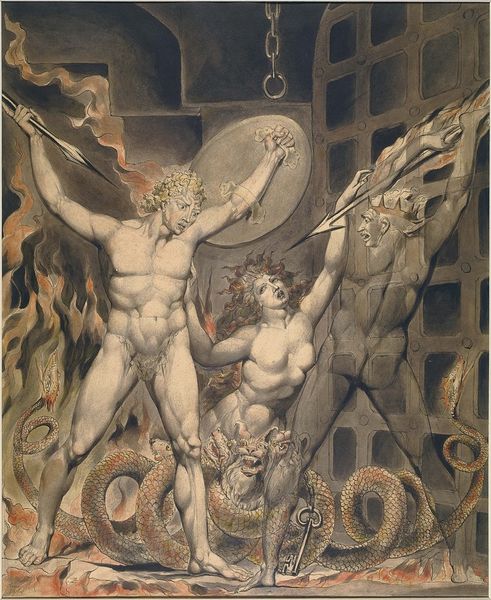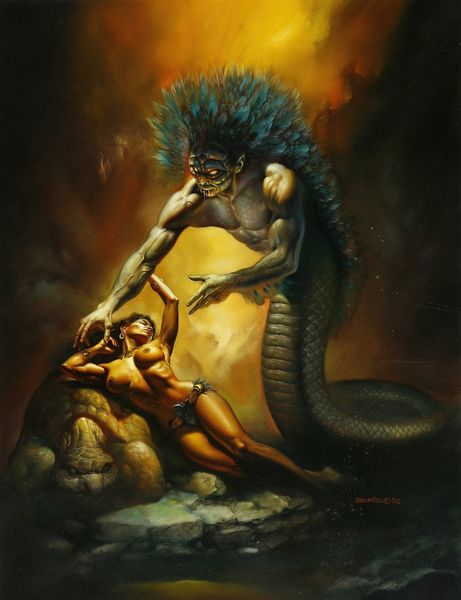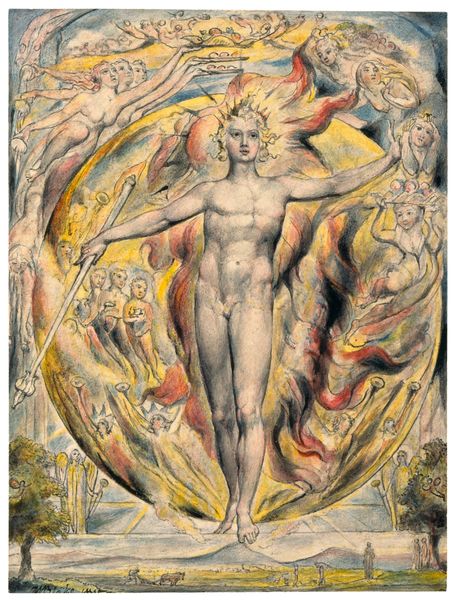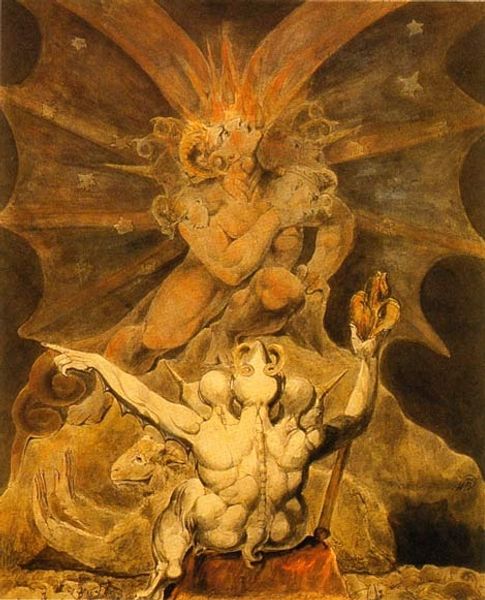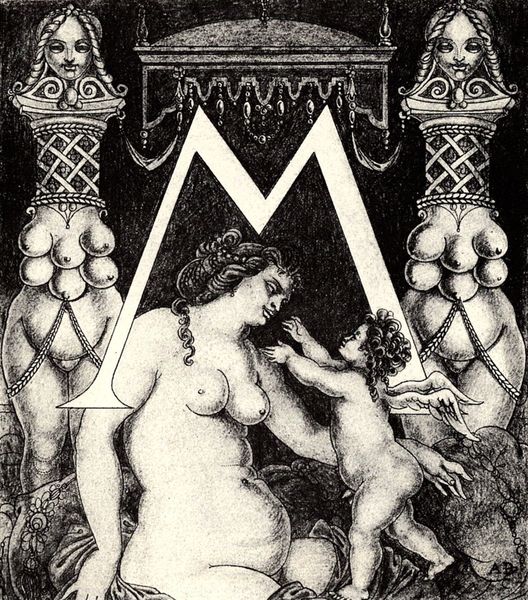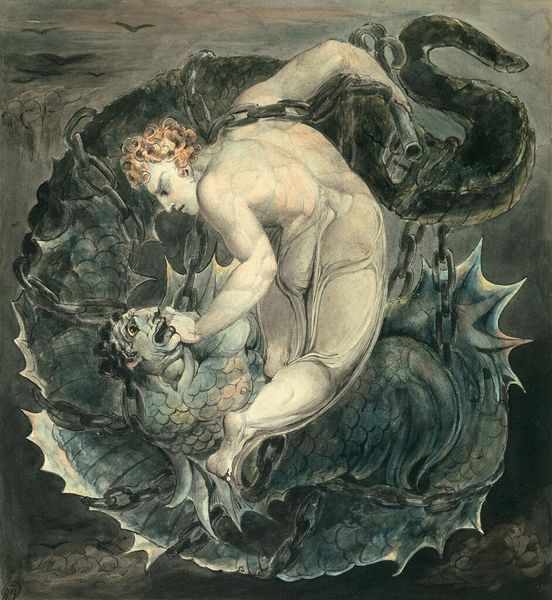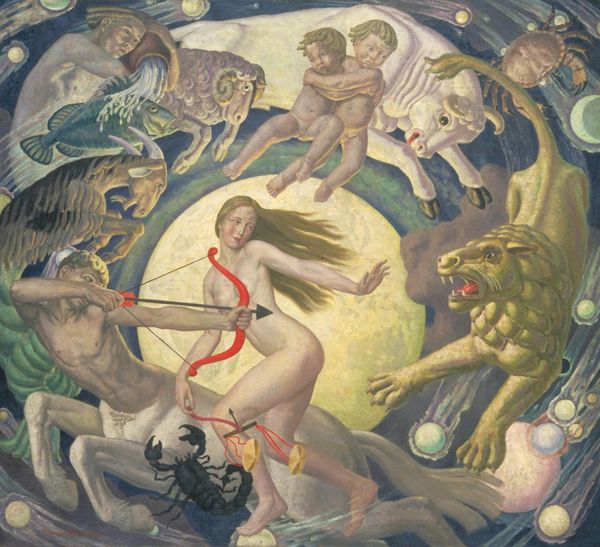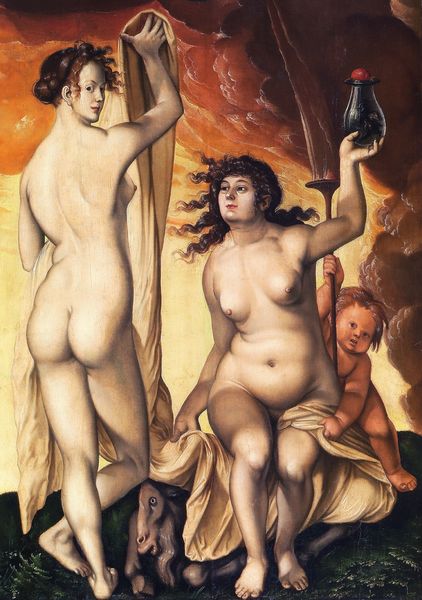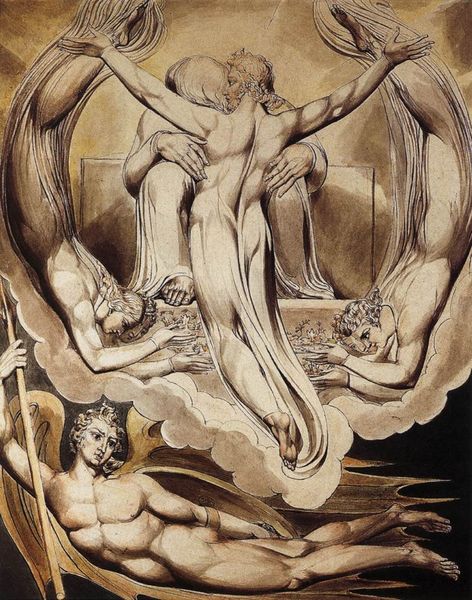
Copyright: Ernst Fuchs,Fair Use
Curator: Welcome. Before us, we have "Metamorphoses of Lucretia," a compelling oil painting created by Ernst Fuchs in 1958. Art Historian: My immediate impression is… unsettling. It’s a bizarre juxtaposition of the classical nude with what appears to be the iconography of violence and the grotesque. It projects a particularly strange, anxiety-ridden mood. Curator: Anxiety certainly plays a role in the arrangement of forms and the color palette here. Fuchs uses a highly detailed, almost hyperreal style, yet the overall effect is far from naturalistic. Notice the way the figure of Lucretia dominates the composition, her back turned to us. How does her posture inform the viewer's reading? Art Historian: The figure being turned away is fascinating given Lucretia's story – a noblewoman who committed suicide after being raped. The lack of a face feels like a denial of her agency, reducing her to a symbol. The whole scene appears laden with symbols of power and destruction, the gun being quite obvious of course but its coexistence with mythical figures like the dragon seems deeply anachronistic. It gives a sense that past trauma is very much alive. Curator: I agree. It is a very contemporary perspective. Let’s consider the interplay of light and shadow, particularly on Lucretia's skin and the creature at her feet. The meticulous rendering lends an almost sculptural quality. Furthermore, the grid-like flooring introduces a rigid structure, a stark contrast to the organic forms of the figures themselves. What readings emerge? Art Historian: Considering its context, the post-war period, I wonder if this reflects a broader societal struggle with trauma. The classical myth is essentially defiled by the encroaching machinery of conflict; suggesting that purity and nobility have become contaminated or rendered unattainable within a damaged world. I see this piece speaking volumes about the relationship between violence and vulnerability. Curator: Indeed. Fuchs expertly balances figuration with a deliberate obscuring of meaning. The crystal structure above her, the tools at the foot of the painting; they appear like visual enigmas resisting easy categorization and demanding repeated, attentive analysis. Art Historian: Examining art like this compels us to grapple with uncomfortable truths, linking personal tragedy with historical upheaval. It is an embodiment of history in progress and an experience I am likely to never forget. Curator: I am particularly intrigued by the semiotic game Fuchs is engaged in here, to draw our awareness to all the layers of form and content operating in unison. A puzzle for the eye, for sure.
Comments
No comments
Be the first to comment and join the conversation on the ultimate creative platform.
